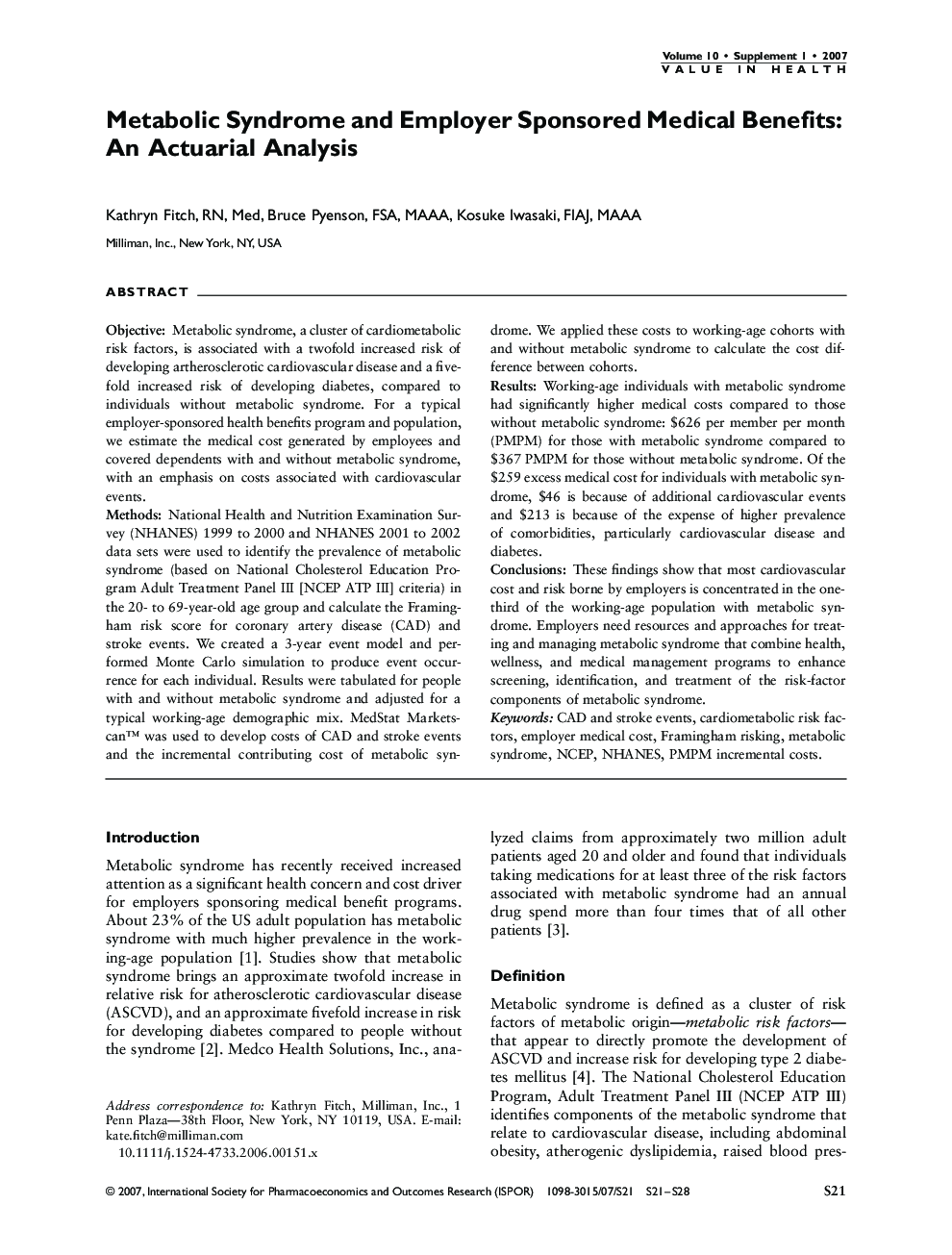| کد مقاله | کد نشریه | سال انتشار | مقاله انگلیسی | نسخه تمام متن |
|---|---|---|---|---|
| 988139 | 935224 | 2007 | 8 صفحه PDF | دانلود رایگان |

ObjectiveMetabolic syndrome, a cluster of cardiometabolic risk factors, is associated with a twofold increased risk of developing artherosclerotic cardiovascular disease and a fivefold increased risk of developing diabetes, compared to individuals without metabolic syndrome. For a typical employer-sponsored health benefits program and population, we estimate the medical cost generated by employees and covered dependents with and without metabolic syndrome, with an emphasis on costs associated with cardiovascular events.MethodsNational Health and Nutrition Examination Survey (NHANES) 1999 to 2000 and NHANES 2001 to 2002 data sets were used to identify the prevalence of metabolic syndrome (based on National Cholesterol Education Program Adult Treatment Panel III [NCEP ATP III] criteria) in the 20- to 69-year-old age group and calculate the Framingham risk score for coronary artery disease (CAD) and stroke events. We created a 3-year event model and performed Monte Carlo simulation to produce event occurrence for each individual. Results were tabulated for people with and without metabolic syndrome and adjusted for a typical working-age demographic mix. MedStat Marketscan™ was used to develop costs of CAD and stroke events and the incremental contributing cost of metabolic syndrome. We applied these costs to working-age cohorts with and without metabolic syndrome to calculate the cost difference between cohorts.ResultsWorking-age individuals with metabolic syndrome had significantly higher medical costs compared to those without metabolic syndrome: $626 per member per month (PMPM) for those with metabolic syndrome compared to $367 PMPM for those without metabolic syndrome. Of the $259 excess medical cost for individuals with metabolic syndrome, $46 is because of additional cardiovascular events and $213 is because of the expense of higher prevalence of comorbidities, particularly cardiovascular disease and diabetes.ConclusionsThese findings show that most cardiovascular cost and risk borne by employers is concentrated in the one-third of the working-age population with metabolic syndrome. Employers need resources and approaches for treating and managing metabolic syndrome that combine health, wellness, and medical management programs to enhance screening, identification, and treatment of the risk-factor components of metabolic syndrome.
Journal: Value in Health - Volume 10, Supplement 1, January–February 2007, Pages S21-S28